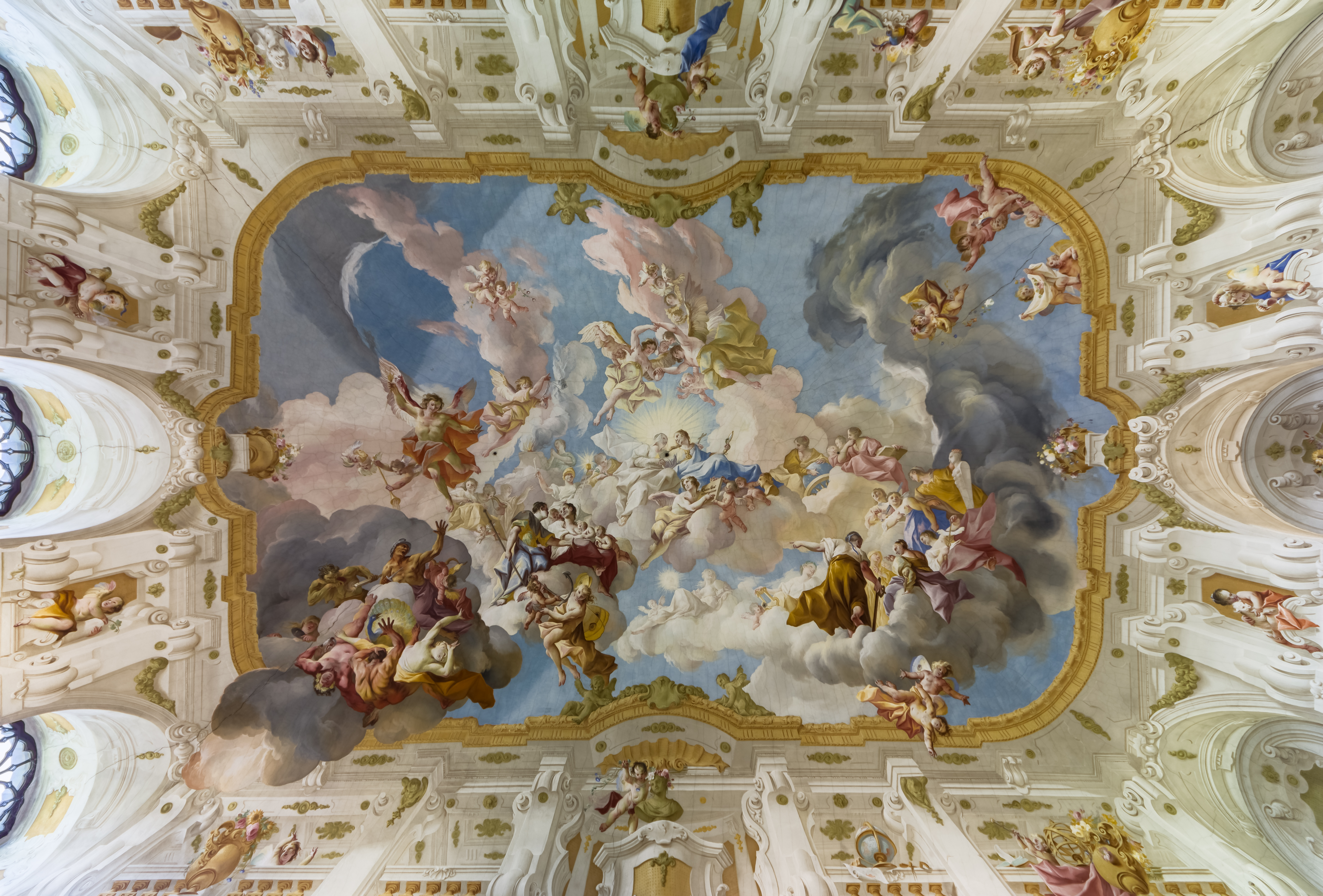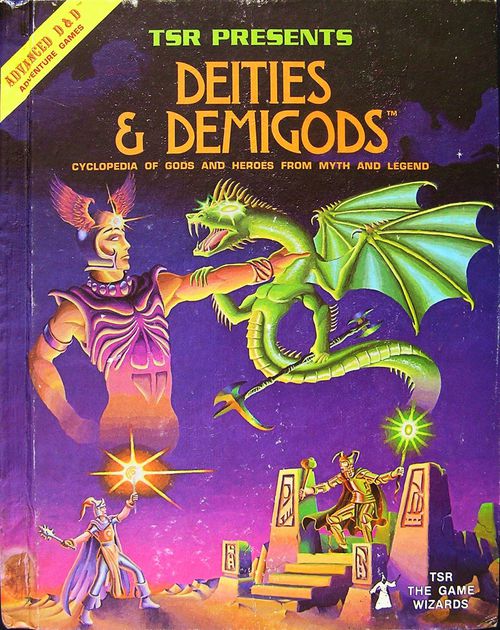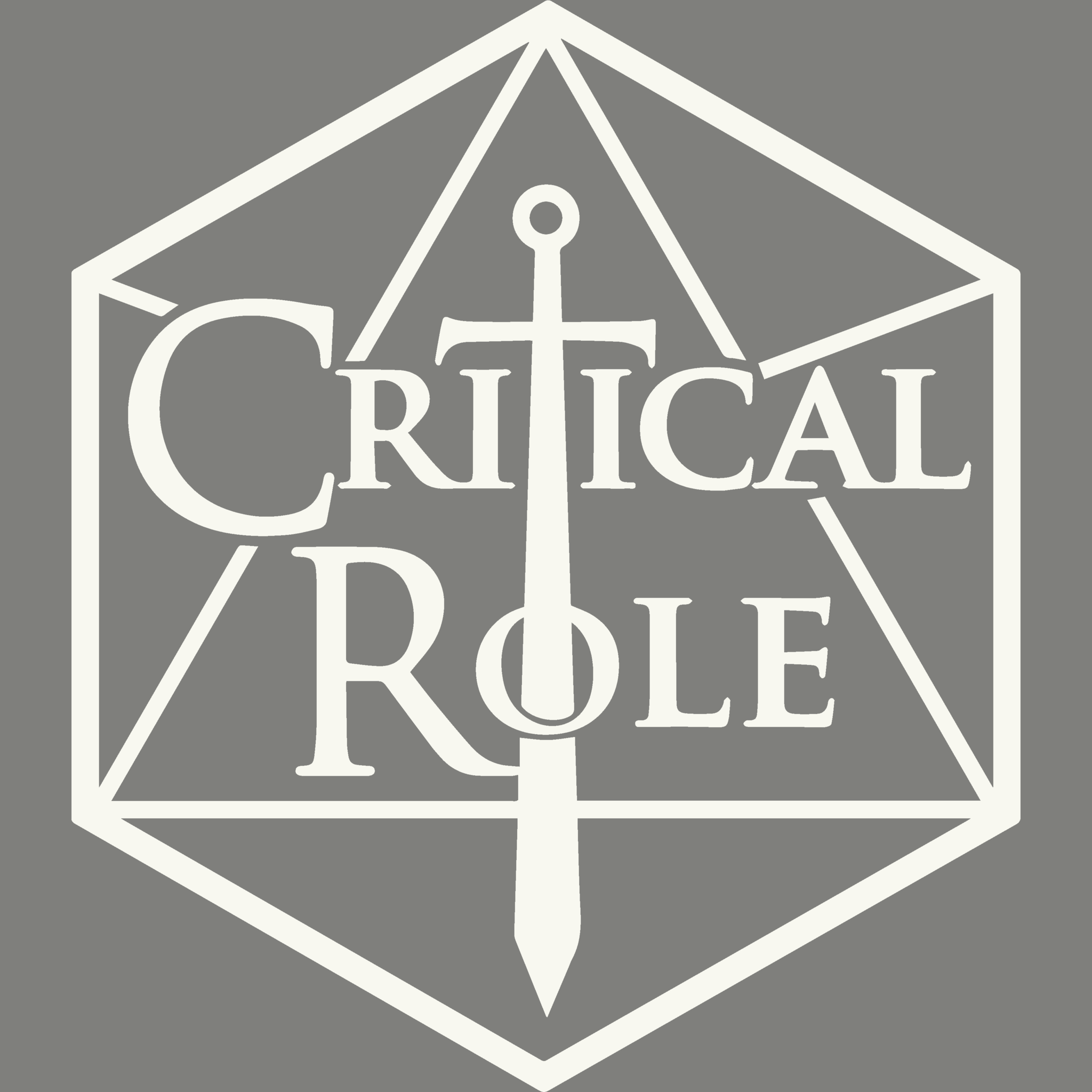This post was inspired by a question I asked on Twitter. How do you explain clerics in D&D in a world with no gods? There were some excellent responses. I decided it was worth expounding on.
The cleric is one of the older ideas in Dungeons and Dragons. The idea of the cleric was originally a bit more like the priestly monster hunters from Hammer Horror films crossed with a crusader era European priests. The original cleric write-ups made almost no mention of individual gods. They were just nebulously holy in some manner and could cast spells as a result.

It didn’t take players long to start talking about what gods their clerics prayed to. This question eventually Deities and Demigods, possibly my favorite classic Dungeons and Dragons supplement.
That model stood quite some time. The clerics got their powers from the gods. Most of the gods you saw in official settings were the more European Style polytheistic pantheons, modeled somewhat on Greek or Norse myth. As D&D progressed through the editions, the gods your cleric worshiped affected their spell choices or weapons they used. The Boxed sets D&D were a different paradigm where Immortals (a late-game player option) were in place of gods and religions were more philosophes. The Advanced D&D and 2nd edition certainly made these changes over time but kept gods as a focus. There was a strong presence of them in the game mechanics, and the worlds. That started to change some towards the ends of the 2nd edition.
Dark Sun was a whole campaign world with no gods and clerics worshipped elementals. Planescape had gods but prevented their entry into the most iconic location in the game, Sigil. That and the overall scope of Planescape diminished the importance of gods in settings. Finally came Eberron, which was a setting with religion and clerics, but the gods were more or less not real. There were clerics of beings that were explicitly not gods and the gods were never really shown to exist in the way they were in Dragonlance, Greyhawk, and Eberron.
4th edition was even more of a break. The structure of the class removed almost all references to differences based on specific gods and did not make a mechanical difference.
Now in 5th edition, we are at a point where clerics pick a domain. The domain can be tied to a specific god but it is not required. So, what do we do with that? We can keep using classic D&D tropes and settings, but the structure of clerics since 4th edition allow for some new possibilities.
All of that preamble out of the way, what kind of in-world explanations might you use for how clerics get their powers? Let’s tackle that.
Forces and Philosophies
The Dungeon Masters Guide has a section about gods in your world and raises the notion of “Forces and Philosophies.” The idea is that the divine power comes from the force of an idea like “Justice” or “War.” The idea itself provides divine power. To a certain extent, this is reflected in classic gods. Ares is a god of war, he personifies the idea of warfare. The subsequent stories and name give Ares an identity beyond that representation. It is not alien to remove the identity and just give a nebulous power to the idea itself. It doesn’t need an identity. To quote Varis “Power resides where men believe it resides. It’s a trick, a shadow on the wall.” Maybe divine power can work that way.

Another notion along these lines is the Jedi. They are effectively space clerics and their “god” is the Force. The force isn’t a god, just universal energy like gravity. It has no identity or origin. The Jedi believe they know what the Force “wants” but there doesn’t really appear to be any commandments from the Force itself. The Jedi have rules but it is just guidance from other Jedi to avoid becoming evil and mad with power. The Domains clerics use can represent a focus they have on the nebulous power they draw from. You probably should change the name, but the Force fits into this model. You could call it “The Light” like Warcraft or some variation that theme.
Here is my example:
The universe has one unifying power, the Mosaic. This is the image of the whole universe as it might appear to those outside it. A myriad of colors, times, places, and concepts make up this vast, all-encompassing image. Clerics see a portion of the Mosaic. Their faith and understanding of that grants then powers over certain aspects. The Domains represent areas they understand nature of particularly well.
The clerics who access the War Domain are called Battle Artists. They view the glory and tragic beauty of war. Their art sways the outcomes of battles and they record the brutal truth of the fallen.
The followers of the Mosaic are scattered through the world but their largest temple is called the Musem. In the vast underground halls, an image has been shaped for centuries on every surface. The work has been an attempt to capture a shadowy echo of the total Mosaic. It is said the image has begun to correct itself a tile at a time.
Saints
Saint
plural noun: saints
- a person acknowledged as holy or virtuous and typically regarded as being in heaven after death.
- a very virtuous, kind, or patient person.
D&D has used saints before. St. Cuthbert was written up as a god in D&D back in the early days as a reference in an early Gygax short story. He was folded into the Greyhawk Mythos. It was even suggested he might actually be the St. Cuthbert from our world, so the idea is not unprecedented. I have also written up St. Nicholas for 5ENsider a while back.
That said, making a setting with no gods but having saints may take some metaphysical gymnastics. The idea of saints is usually associated with a person of great faith in an existing religion like Christianity. There is nothing that says that is a requirement though. A saint can gain divine grace through belief in them and their actions.
This is not unlike the previously discused Forces and Philosophies idea. The saint can embody a particular virtue or domain.
Example:

Saint Balthazar, the Patron saint of Knowledge was a powerful wizard in life and a respected scholar who gathered texts from around the world in his long life. The clerics are devoted to his order to spend their lives gathering and cataloging all the information they can. He is said to journey the multiverse still, learning all he can and returning to share with his most trusted followers.
His church is called The True Academy. His Clerics are called Proctors and they often pair with Paladins known as Librarians. Their primary roles in society are the collection of information, spreading that information, and ensuring that it reaches the people most in need.
Balthazar’s Academy is widely seen as the head of the church, though that is not a formal designation. It was the heart of St. Balthazar’s mortal work, and many of his original works are preserved there. The Library there is one of the largest in the world and has a mystical power in itself.
You get the idea. The notion is to give the player some identity, lore and a source of doctrine that they can learn and latch on to. They can have story hooks and even items tied to that saint. It preserves the idea and function of a god, but with the added benefit of them starting as mortal. This means it can be a thing PC’s might aspire to.
Animism (Elementals and Spirits)
Elemental explanations for the origins of a world are not actually that big of a stretch. 4th edition introduced a whole storyline involving elemental Primordials who fought the gods at the dawn of creation. It is not hard to picture that and see clerics worshiping them instead, but that just replaces one set of god for gods of a different name.
Instead, what I mean here is the element or energy itself is the thing the cleric worship, and elementals or spirits are the intermediaries of that force. Dark Sun did a version of this.
A cleric of fire burns sacrifices and gains spells. When they cast spells like Augery, Commune, or Legend Lore the answers come from elementals. They are still talking about the concept or force of fire, but it has a different feel to it.
But what about Domains? Well, the Domains represent different aspects of the element. Light Domain could be an aspect of fire. Order is certainly an aspect of metal or stone. These are not hard to fit if you think of philosophies tied to those elements. Fire can be all about creation, the spark of brilliance as well as destruction. It warms and heals as much as it burns. You can have Forge, War, Knowledge, or even Trickery tied up in just that one element.
One thing to do when thinking about if you use the elemental forces is figuring out how they relate. The classic model has earth, air, water, and fire. You could possibly add aether or void to that list, depending on the culture. There is an old Chinese version that is Wood, Fire, Earth, Metal, and Water. There is also a version I saw in a larp I played in years ago which added Air. These models were used to explain all of the things in the world as interactions of these elements. The balance of these things is important and knowing how they interact should shape your world building.
What about spirits? Spirits are similar. They represent things but like the pervasive identity of gods. There are a few ways to do that. You can have the spirits of a place or thing. The spirit of this mountain is strong and granted me my spells! The spirit of this river answered my sacrifices!
This is what most people think of when they about Animism. Domains again can just represent the thing that this cleric concentrates on. The spirits in most traditions are often a bit more “talky” than the gods. They may have a more hands-on relationship with your clerics.

Another version of spirits is spirits of certain concepts. A spirit of death is a personification of one of the more powerful forces in the existence, a localized manifestation of abstract notions. The spirit is neither good nor bad but takes on the aspects of what the people around them think of death. They can also represent things like knowledge, war, justice, or trickery and by doing so tie nicely into the structure of cleric Domains. A couple of good examples of what spirits being used these ways are Dragon Age Inquisition for what different concepts(which become demons when corrupted) and Shadowrun Shamans where they summon up things like hearth spirits or river spirits.
My Example:
The elements of the world are Fire, Stone, Metal, Wood, Water, Wind and Gnosis. The world is made up of things though only living things still have Gnosis within. The clerics of these forces are called the Bound. The Bound enjoy a special relationship with these elements.
The Bound of the Tempest Domain are often called Stormcrows. They will entreat the elementals of Water and Wind. They will often drop feathers upon the water as parts of their religious rights, as an offering to the elements.
The Bound do not have a set hierarchy and no significant churches. They are trained by a master to apprentice or sometimes, elemental to a student. The places which are holy to them are places with strong connections to the elements they are tied to. A Bound of the Life Domain is strongly connected to Gnosis and Water. They might find a gentle pond holy and summon elementals there to gain their spells.
Other notions
There are plenty of other variations. Maybe the clerics in your world have alien blood in them and their connections to it allow them to access divine casting, but only through focused disciplines which is why you have Domains.
You could say the power is from supernatural parasites that give spells in return for devotion. If the clerics don’t get enough followers the parasites may die, or maybe they feed on the cleric.
You could treat it like Dune. Clerics learned special mental disciplines which allowed them access to the divine magic, so they could oppose other much more dangerous sources of power. No gods involved, just supreme mental discipline.
There are a bunch of ideas you can run with. I am certainly not going to tell you not to use gods in your world design. The point of this article is that you don’t have to do that. You can create compelling alternatives if you want to.


